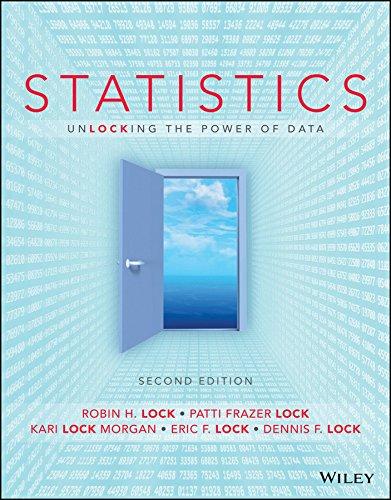Help for Insomniacs In Exercise 1.23, we learned of a study to determine whether just one session
Question:
Help for Insomniacs In Exercise 1.23, we learned of a study to determine whether just one session of cognitive behavioral therapy can help people with insomnia. In the study, forty people who had been diagnosed with insomnia were randomly divided into two groups of 20 each. People in one group received a one-hour cognitive behavioral therapy session while those in the other group received no treatment. Three months later, 14 of those in the therapy group reported sleep improvements while only 3 people in the other group reported improvements.
Science News, August 30, 2003.
(a) Create a two-way table of the data. Include totals across and down.
(b) How many of the 40 people in the study reported sleep improvement?
(c) Of the people receiving the therapy session, what proportion reported sleep improvements?
(d) What proportion of people who did not receive therapy reported sleep improvements?
(e) If we use $\hat{p}_{T}$ to denote the proportion from part (c) and use $\hat{p}_{N}$ to denote the proportion from part (d), calculate the difference in proportion reporting sleep improvements, $\hat{p}_{T}-\hat{p}_{N}$, between those getting therapy and those not getting therapy.
Data From Exercise 1.23:
A recent study shows that just one session of cognitive behavioral therapy can help people with insomnia.16 In the study, forty people who had been diagnosed with insomnia were randomly divided into two groups of 20 each. People in one group received a one-hour cognitive behavioral therapy session while those in the other group received no treatment. Three months later, 14 of those in the therapy group reported sleep improvements while only 3 people in the other group reported improvements.
Step by Step Answer:

Statistics, Enhanced Unlocking The Power Of Data
ISBN: 9781119308843
2nd Edition
Authors: Robin H Lock, Patti Frazer Lock, Kari Lock Morgan, Eric F Lock, Dennis F Lock





